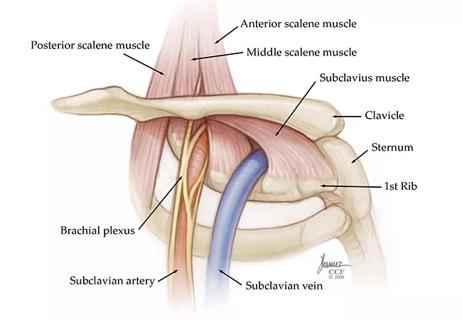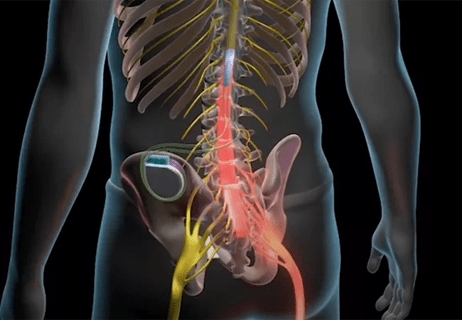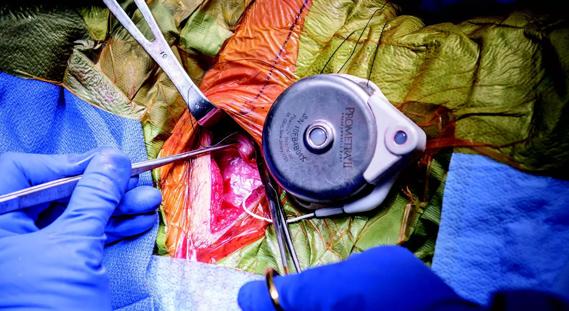Newer procedure is helping those with moderate to severe lumbar spinal stenosis

Patients with moderate to severe lumbar spinal stenosis (LSS) often can’t stand longer than a few minutes or walk more than a few hundred feet without developing severe pain. This significantly impacts their quality of life. Until a few years ago, the only treatment options available for patients with LSS were conservative therapies or open spine surgery.
Advertisement
Cleveland Clinic is a non-profit academic medical center. Advertising on our site helps support our mission. We do not endorse non-Cleveland Clinic products or services. Policy
For patients who don’t respond to conservative treatment and are unable or unwilling to undergo open spine surgery, Cleveland Clinic’s Department of Pain Management offers a novel X-ray guided percutaneous outpatient treatment called mild®, which stands for minimally invasive lumbar decompression.
“The mild procedure decreases pain and increases mobility while maintaining the structural integrity of the spine,” says Nagy Mekhail, MD, PhD, Director of Evidence-Based Medicine in the Department of Pain Management. He says LSS usually affects people in their seventh decade of life. Medicare established coverage for the mild procedure earlier this year.
LSS may be due to a bulging disk and/or hypertrophy of the ligamentum flavum. Narrowing of the spinal canal causes nerve compression. When someone with LSS stands or walks, the spinal canal narrows even more, causing low back and leg pain that is relieved with sitting or bending forward, which is called neurogenic claudication.
Patients with moderate to severe LSS may be candidates for mild if they complain of neurogenic claudication and if the MRI shows that ligamentum flavum hypertrophy is the major cause of the spinal stenosis, Dr. Mekhail explains.
Nonsurgical treatment for LSS includes NSAIDs, physical therapy and/or epidural steroid injections. These treatments are effective in only a small percentage of patients. And when they do work, the effect may not be sustained, and the treatment may need to be repeated.
“Epidural steroid injections tend to have limited effectiveness because LSS pain is neuropathic/ ischemic pain, unlike the radicular pain which is inflammatory in nature. That is why epidural steroids are more effective in the latter,” Dr. Mekhail explains.
Advertisement
Some patients who have LSS can benefit from open spine surgery, in which the laminae are removed to relieve pressure on the spinal nerves. However, not all patients are candidates for open spine surgery, especially since surgery and anesthesia may carry an increased risk in the older patients who account for the majority of LSS patients.
The mild procedure offers a new treatment option for these patients. “With more than 10,000 baby boomers turning 65 every day, more and more patients are seeking innovative treatments such as mild to stay active and maintain their quality of life,” Dr. Mekhail says.
The mild procedure is performed under deep sedation through a 1-cm incision. The clinician uses a special sculpting tool that glides through a portal with a diameter of 5 mm, about the size of a pen cap, to go between the bones, scrape out the ligament and widen the spinal canal to reduce nerve roots compression. Contrast material is injected into the epidural space to assess positioning and guide with visualization throughout the procedure.
Because the bony architecture of the spine remains intact, spinal mechanics are not disrupted and patients typically recover quickly. They are discharged home after a couple of hours and are able to begin the rehabilitation program. Patients are encouraged to walk regularly and/or participate in physical therapy following the procedure.
Dr. Mekhail says results and feedback on the procedure continue to be positive, including:
Advertisement
“It is a great option for the right patients,” says Dr. Mekhail. “Those who have the procedure are able to get back to more normal living and to the activities they enjoy very quickly.”
Treatments for lower spine stenosis (LSS) range from conservative management including epidural steroid injections (ESI) to laminectomy surgery. As reported by Nagy Mekhail, MD, and the team of researchers at Cleveland Clinic, treatments vary greatly in cost and success. To look more closely at cost effectiveness, a multivariate analysis was conducted by Dr. Mekhail’s group. The analysis compared use of the mild procedure to ESI or laminectomy surgery. The mild strategy turned out to be the most cost effective for the subset of patients who were studied.
In conclusion, the mild procedure is a cost-effective alternative for appropriate patients – that is LSS patients who have moderate to severe symptoms of neurogenic claudication and have failed conservative therapy and those not ready for (or represent high risk for) lumbar laminectomy surgery.
Advertisement
Advertisement

Researchers seek solutions to siloed care, missed diagnoses and limited access to trauma-informed therapies

Study participants also reported better sleep quality and reduced use of pain medications

Two-hour training helps patients expand skills that return a sense of control

Program enhances cooperation between traditional and non-pharmacologic care

National Institutes of Health grant supports Cleveland Clinic study of first mechanism-guided therapy for CRPS

Pain specialists can play a role in identifying surgical candidates

Individual needs should be matched to technological features

New technologies and tools offer hope for fuller understanding